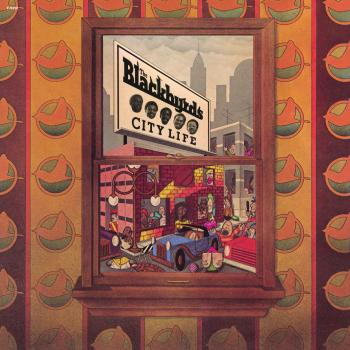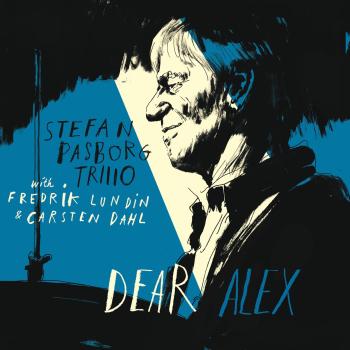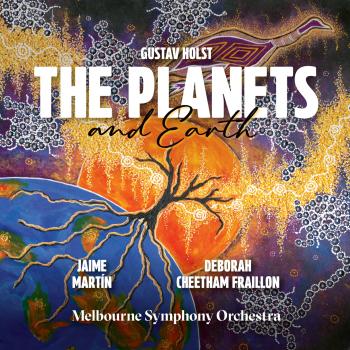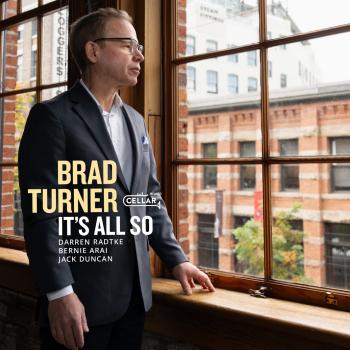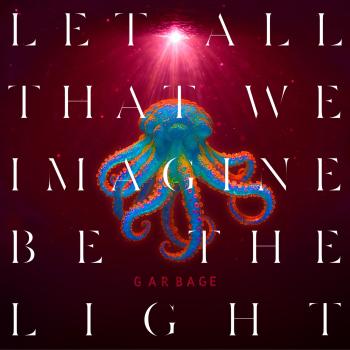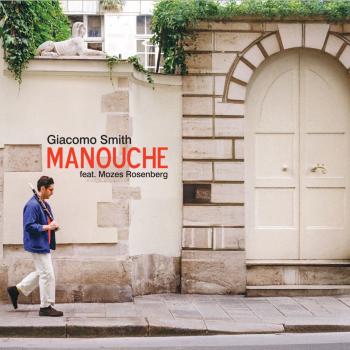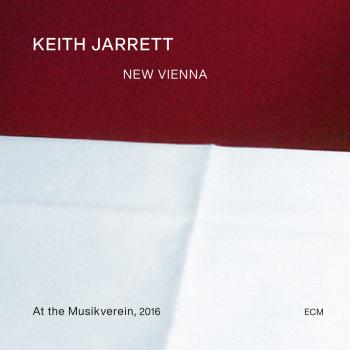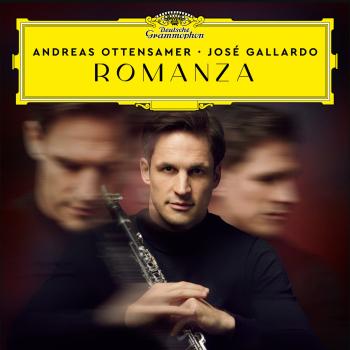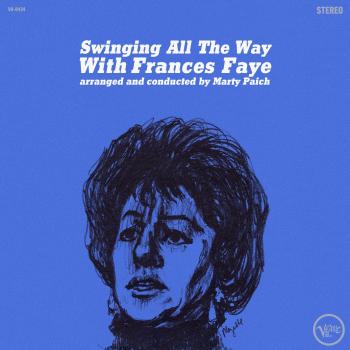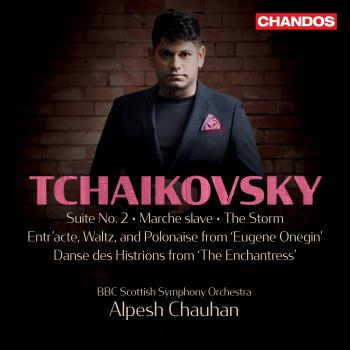
Liszt: The Piano Concertos Julius Katchen & London Philharmonic Orchestra
Album Info
Album Veröffentlichung:
2009
HRA-Veröffentlichung:
28.10.2011
Label: Decca Classics
Genre: Classical
Subgenre: Concertos
Interpret: Julius Katchen & London Philharmonic Orchestra, Ataulfo Argenta
Komponist: Frank Liszt
Das Album enthält Albumcover
Entschuldigen Sie bitte!
Sehr geehrter HIGHRESAUDIO Besucher,
leider kann das Album zurzeit aufgrund von Länder- und Lizenzbeschränkungen nicht gekauft werden oder uns liegt der offizielle Veröffentlichungstermin für Ihr Land noch nicht vor. Wir aktualisieren unsere Veröffentlichungstermine ein- bis zweimal die Woche. Bitte schauen Sie ab und zu mal wieder rein.
Wir empfehlen Ihnen das Album auf Ihre Merkliste zu setzen.
Wir bedanken uns für Ihr Verständnis und Ihre Geduld.
Ihr, HIGHRESAUDIO
- 1 1. Allegro maestoso - Tempo giusto 05:23
- 2 2a. Quasi adagio 05:09
- 3 3. Allegretto vivace 04:11
- 4 4. Allegro marziale animato 04:02
- 5 1. Adagio sostenuto assai - Allegro agitato assai 06:58
- 6 2. Allegro moderato 05:01
- 7 3. Allegro deciso - Marziale un poco meno allegro 06:01
- 8 4. Allegro animato 01:43
- 9 Hungarian Rhapsody No.12 in C sharp minor, S.244 09:49
- Liszt: 10 Harmonies poétiques et religieuses, S.173
- 10 No. 7 Funérailles 11:21
- Liszt
- 11 Fantasia on Hungarian Folk tunes, S.123 14:55
Info zu Liszt: The Piano Concertos
No showmanship, no big gestures, but great music-making from a great pianist... Having grown up with Katchen's Liszt concertos it is, I admit, difficult to be objective, for whatever their shortcomings, every subsequent recording has had to equal them. Very few have, and none has quite displaced or surpassed them for me. (Jeremy Nicholas, Gramophone)
Argenta...inspires some blistering orchestral playing – from the LPO this time – in the First Liszt. Katchen is wispy and quicksilver when needs be – the lightness and graded panache of his trill in the second movement is memorable, whereas the sheer adrenalin and panache of his playing in the finale is a joy to hear. Stoical but sensitive in the A Major concerto he can also show his brittle mettle in the finale. (Jonathan Woolf, MusicWeb International)
Julius Katchen, Piano
London Philharmonic Orchestra
London Symphony Orchestra
Ataulfo Argenta, Conductor
Riero Gamba, Conductor
Julius Katchen (1926-1969)
Julius Katchen’s grandparents taught music at conservatories in Warsaw and Moscow, whilst his mother was a pupil of Isidor Philipp at the American Conservatory in Fontainebleau. His father was an amateur violinist, and with so much music in the home, young Julius received all his musical tuition from his family. At the age of ten he made his public debut in Newark playing Mozart’s Piano Concerto in D minor K. 466. A year later he played the same concerto with the Philadelphia Orchestra and Eugene Ormandy at the Philadelphia Academy of Music and a month later repeated the performance in Carnegie Hall, this time with John Barbirolli conducting. At twelve Katchen gave his New York recital debut at the Town Hall and in July 1939 played the Schumann Piano Concerto in A minor Op. 54 at Lewisohn Stadium with the New York Philharmonic and Efrem Kurtz.
Katchen was leading the life of a musical prodigy, who was taught not only music but all academic studies at home. Fortunately, when he was fourteen his father decided to enrol him in high school and stop his public performances. From high school Katchen went to Haverford College in Pennsylvania, graduating in 1946 with a degree in philosophy. He had also studied English literature at Haverford and whilst at college he had some piano lessons from David Saperton. In the midst of his college studies, in December 1944, Katchen gave a recital at Carnegie Hall and two years later was one of five Americans offered a fellowship by the French government.
Arriving in Paris in the autumn of 1946 Katchen was asked to play in a concert organised by UNESCO. His performance of Beethoven’s ‘Emperor’ Concerto was broadcast and three days later he played Tchaikovsky’s Piano Concerto No. 1 in B flat minor Op. 23 whilst a week later, the Schumann Piano Concerto in A minor Op. 54 followed. He played Gershwin’s Rhapsody in Blue at the Nice Opera House and the following February gave his recital debut in Paris; in April 1947 he played with the Vienna Philharmonic Orchestra and in May was collaborating with Otto Klemperer. In the spring of 1947 Katchen played in nine European capitals and at the end of the year began a tour of America. From then on he made his home in Paris, playing frequently in Europe but less often in America.
Katchen’s regular tours covered all six continents, his unlimited stamina and ambition leading him to give more than one hundred concerts per season. He played much music by the Russian virtuoso school as well as Beethoven and Brahms. In April 1964 Katchen played the complete solo music of Brahms in four recitals at London’s Wigmore Hall, repeating the cycle in Cambridge (England), New York, Berlin, and Amsterdam. He was fond of big programmes and is known to have played three piano concertos in one concert at London’s Royal Festival Hall (Beethoven’s No. 3, Brahms’s No. 2 and Rachmaninov’s No. 2). In his early years Katchen played many of the great Russian concertos by Tchaikovsky, Prokofiev and Rachmaninov and solo works such as Balakirev’s Islamey and Mussorgsky’s Pictures at an Exhibition.
His technique was chrome-plated and invincible, and (no doubt influenced by the other young Americans of the time) during the 1950s Katchen could give powerfully brilliant performances that lacked any kind of poetry and delivered little musicality whilst he strove for speed beyond anything else. Yet later in his career he was noted for his interpretations of the great Classical masterworks such as Schubert’s Piano Sonata in B flat D. 960 and Beethoven’s ‘Diabelli’ Variations Op. 120 which he carefully studied from a philosophical viewpoint. Toward the end of his life Katchen began to find the depths in the music of Brahms, and if he had not died at the early age of forty-two from cancer, he may have developed musically into a more profound interpreter. However, there is no denying his popularity with audiences, and many of his large number of recordings were best-sellers. American composer Ned Rorem composed his Piano Sonata No. 2 for Katchen, who gave the première in Paris in 1952.
Katchen made all of his records for Decca and although his career was cut short, he still managed to record a great deal in the twenty years between 1949 and 1969. He was apparently the first artist to appear on a solo piano LP recording, with his performance of Brahms’s Piano Sonata in F minor Op. 5. In addition to the complete piano music by Brahms recorded in the 1960s, Katchen also recorded the violin sonatas with Josef Suk, and the piano trios with Suk and János Starker. All five concertos of Beethoven were recorded, plus the Choral Fantasy Op. 80 and Rondo in B flat WoO 6 with the London Symphony Orchestra and Piero Gamba. Katchen has a particularly good partnership with Gamba, and the Concerto No. 4 is probably the highlight of the series, containing a wonderful dialogue in the slow movement, and the slow movement of the C minor concerto shows how Katchen could hold an audience spell-bound with his intimate sound. Three Mozart concertos were also recorded, including the D minor K. 466 with which Katchen made his debut. Benjamin Britten requested that Katchen be the soloist in his recording of Diversions for Piano (left hand) and Orchestra, whilst other twentieth century concertante works recorded include both concertos by Ravel, Bartók’s Concerto No. 3, Gershwin’s Concerto in F and his Rhapsody in Blue, and Dohnányi’s Variations on a Nursery Song Op. 25. Of the Romantic concertos, Katchen recorded both by Liszt, both by Brahms, Tchaikovsky’s No. 1, Rachmaninov’s No. 2 and his Paganini Rhapsody, Prokofiev’s No. 3, and the Piano Concertos in A minor by both Grieg and Schumann. Katchen recorded Rorem’s Piano Sonata No. 2 around the time he gave the première in the early 1950s.
Ataulfo Argenta (1913-1958)
Ataúlfo Argenta was born in November 1913 in the northern Spanish fishing village of Castro Urdiales. He studied the piano at the Madrid Conservatory, and, after winning first prize there, spent ten years as a concert pianist in Spain. In 1941 he undertook further studies at Kassel in Germany and there met Carl Schuricht, who encouraged him to conduct. In 1945 Argenta joined the Spanish Orquesta Nacional as orchestral pianist; in 1946 he founded the Madrid Orquesta de Cámara, and in 1947 he became chief conductor of the Orquesta Nacional. For the next decade he was Spain's leading conductor, founding festivals in Santander and Granada. He also performed in Geneva, Paris, Vienna and Argentina. His recordings include nearly 50 zarzuelas and other Spanish repertoire for the Spanish Columbia label, and he recorded mainstream Romantic works in Paris, London and Geneva. His developing career was tragically cut short by a car accident in January 1958.
This compilation features Argenta's 1955 stereo recording of Liszt's Faust Symphony (with the work's original ending), which has never been issued before on CD. Schubert's 'Great C major' Symphony (in stereo from 1957) and Ravel's Alborada del gracioso (in mono from 1956) are extremely rare recordings and are also new to the CD catalogue. Falla's complete ballet El amor brujo (from 1951) is included as highly representative of the fine interpretations of Spanish repertoire for which Argenta was famed.
Piero Gamba (1936-)
The career of Piero Gamba has no precedent in the history of orchestral conducting. A serious musician since a very early age, he has conducted constantly for 60 years, thousands of times, with 125 symphony orchestras, in 300 cities, in 35 nations.
Born in Rome in 1936, Mr. Gamba has been appointed honorary director for life of nine symphony orchestras worldwide. Among many honorary distinctions, he was awarded the Arnold Bar Memorial Medal in Great Britain, and his name appears in major music encyclopedias.
He has served as president of juries in various international music competitions and has given piano recitals and played concertos conducting from the keyboard. Maestro Gamba has made numerous recordings with several labels and is a violinist and composer.
Maestro Gamba was the Music Director and Conductor of the Winnipeg Symphony Orchestra, the Australian Broadcasting Corporation and the National Symphony Orchestra of Uruguay for a combined total of 20 years. Soloists look forward to performing with him. Yehudi Menuhin summarized these feelings on a CBC national broadcast when he said: 'I was never better accompanied. A sheer joy. It was as if I were playing with someone who knew my most secret inclination... There was no burden, no weight on me. I played as freely as I might alone. Incredible!'
When he organized the Greatest Concert in Canadian History, the president of the Association of Canadian Orchestras wrote: 'There are many oustanding musicians and artists in Canada, but only one with the capacity to conceive such an idea and the international prestige to accomplish it: Piero Gamba'.
In 1964, Maestro Gamba accomplished his dream: 'to create a greater spiritual fusion of men through the arts'. Together with such international notables as Pablo Casals, Victor de Sabata, Philip Newman, Albert Scweitzer, André Segovia and Igor Stravinsky as founding members, he established Symphonicum Europae. This prestigious organization received the high patronage of Her Majesty, the late Queen Elisabeth of Belgium.
Regarding Symphonicum, it has been said that there is probably only one man in the world with the ability to convince such a prestigious assembly to devote their valuable time and energy at no fee for such an extraordinary project. That person is Piero Gamba.
Dieses Album enthält kein Booklet

